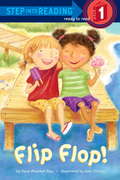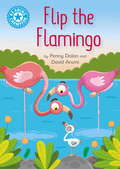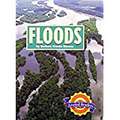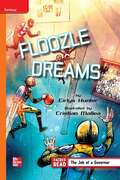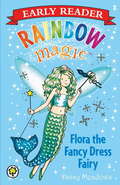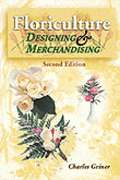- Table View
- List View
Flights of Color
by P. David Pearson Theodore Clymer Roselmina Indrisano Dale D. Johnson Richard L. VenezkyEnglish literature textbook. This book is like a new land, a land of mystery and adventure awaiting to be explored and the frontier crossed with much joy and pleasure.
Flip Flop! (Step into Reading)
by Dana Meachen-RauTwo best friends ponder over and partake in summer's seemingly endless possibilities. There's fun to be had at the sunny shore, fireworks to watch, and amusement parks to visit. This Step 1 story has big type and easy words, and rhyme and rhythm.
Flip Stick Fun (Fountas & Pinnell Classroom, Guided Reading)
by Robert Reynolds Denise ProwellNIMAC-sourced textbook
Flip the Flamingo: Independent Reading Blue 4 (Reading Champion #138)
by Penny DolanFlip is a baby flamingo who discovers it's hard to stand on your own two feet, at first! Reading Champion offers independent reading books for children to practise and reinforce their developing reading skills.Fantastic, original stories are accompanied by engaging artwork and a reading activity. Each book has been carefully graded so that it can be matched to a child's reading ability, encouraging reading for pleasure.Independent Reading Blue 4 stories are perfect for children aged 5-6 who are reading at book band 4 (Blue) in classroom reading lessons.
Floating and Sinking: Student Investigations
by National Science Resources CenterNIMAC-sourced textbook
Flora the Fancy Dress Fairy (Rainbow Magic Early Reader #1)
by Daisy MeadowsKirsty and Rachel are attending a grand costume party at McKersey Castle. But Jack Frost thinks the castle should be hosting his party instead, and steals Flora the Fancy Dress Fairy's magic items to further his naughty plan! It's up to Rachel and Kirsty to set things right in this abridged, simplified version of the bestselling Rainbow Magic story.
Floral Design & Interior Landscape Management
by Dianne A. NolandFloral Design & Interior Landscape Management is a comprehensive book about the floral industry. The book explores the many segments of the floral industry and the beautiful products and services it provides. The reader will learn that flowers and foliage plants enrich our lives with beauty and function.
Floriculture Designing & Merchandising (2nd Edition)
by Charles P. GrinerProvides an introduction to the floral industry, along with basic instructions in the techniques of floral design and merchandising. Coverage is at a high school level, using large type and numerous, sometimes fuzzy b&w illustrations of arrangements. Topics range from careers in the retail flower business, design principles, and flower and plant selection and storage, to arrangements for holidays and weddings, pricing strategies, displays, delivery, and professional organizations. Annotation C. Book News, Inc., Portland, OR (booknews.com).
Florida Benchmarks Practice Book for Home or School, Grade 1
by Houghton Mifflin HarcourtMath Activity Book-Grade 1: Florida Edition
Florida Benchmarks Practice Book for Home or School, Grade 3
by Houghton Mifflin HarcourtNIMAC-sourced textbook
Florida Benchmarks Practice Book for Home or School, Grade 4
by Houghton Mifflin HarcourtNIMAC-sourced textbook
Florida Chemistry
by Antony C. Wilbraham Dennis D. Staley Michael S. Matta Edward L. WatermanNIMAC-sourced textbook
Florida Civics Economics & Geography
by John J. Patrick Richard C. Remy Gary E. Clayton David C. SaffellHigh School Social Studies Textbook
Florida Collections (Grade #11)
by Holt McdougalA literature book that helps build juvenille reading skills

